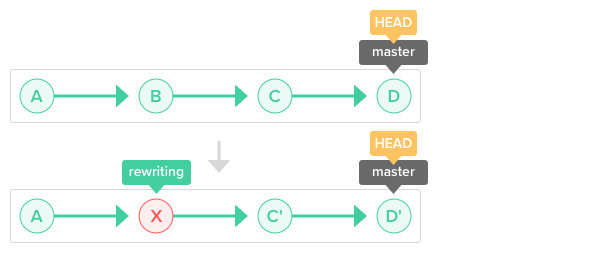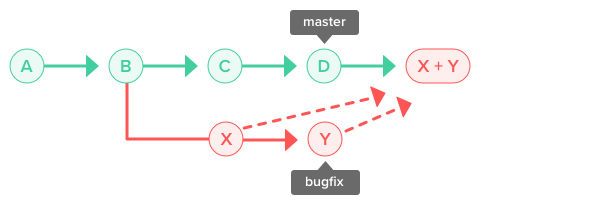Rewriting history
There are times when you need to revise your local commit history. This can include anything from changing your commit message to changing the order of your commits to squashing commits together. In this section, we'll discuss how to rewrite history before sharing your work with others.
Git commit --amend
You can modify the most recent commit in the same branch by running git commit --amend. This command is convenient for adding new or updated files to the previous commit. It is also a simple way to edit or add comments to the previous commit.

Git rebase
Rebasing is the process of taking all the changes that were committed on one branch and applying them to a new branch.
Run git rebase and add in the -i option to rewrite, replace, delete, and merge individual commits in the history. You can also:
- Rewrite a past commit message
- Squash a group of commits together
- Add files that have not been committed


Git cherry pick
You can apply an existing commit from another branch to the current branch within the repository by using the git cherry-pick command. Cherry-picking allows you to:
- Move a commit that was committed to the wrong branch to the right branch.
- Add a commit to the current branch based on an existing commit from another branch.

Git merge --squash
Squashing is the process of merging multiple commits into a single commit.
If you run git merge and the --squash option, a new commit will group all of the commits from that branch together. The commit will be used to merge into the current branch.

No comments:
Post a Comment